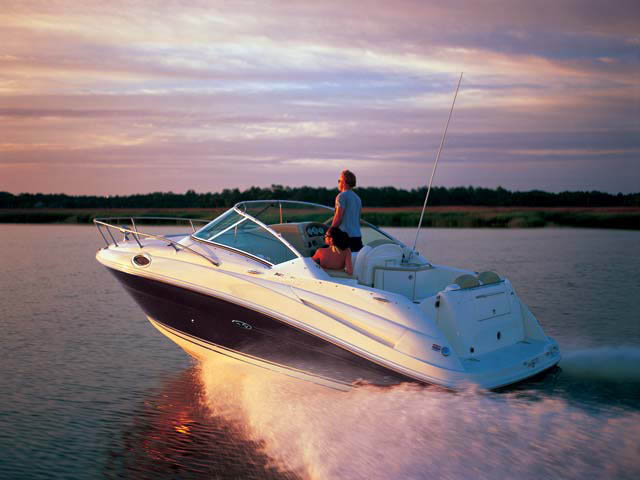 The fact is undeniable: one look at the pristine Finger Lakes and you know that we live in a beautiful area. With temperatures in the 70s and 80s this week, more boaters are hitting the water early this year. As a boater myself, I certainly understand the allure of taking to the water; as such, I thought it would be prudent to answer some frequently asked questions about boating laws in New York State. So, whether you are tubing on Keuka Lake or taking a kayak out on the Chemung River, hopefully these answers will help you make the most of this gorgeous weather— and stay safe in the process.
The fact is undeniable: one look at the pristine Finger Lakes and you know that we live in a beautiful area. With temperatures in the 70s and 80s this week, more boaters are hitting the water early this year. As a boater myself, I certainly understand the allure of taking to the water; as such, I thought it would be prudent to answer some frequently asked questions about boating laws in New York State. So, whether you are tubing on Keuka Lake or taking a kayak out on the Chemung River, hopefully these answers will help you make the most of this gorgeous weather— and stay safe in the process.
All of these answers apply to New York State laws only. To find out more about New York boating laws and regulations, please visit http://nysparks.com/recreation/boating/. For more tips, you can also consult a past blog post by ZiffLaw Attorney here.
What is the speed limit on the Finger Lakes?
There is no set speed limit on Seneca Lake because it is considered an international waterway, but it is still smart to follow general rules like “Have your boat under proper control at all times” and “Appropriately reduce your speed when near shore or in congested areas”.
However on most of the other Finger Lakes there ARE speed limits. For example, on Keuka Lake, the boating speed limit is 45 mph during daylight, 25 mph after sunset until sunrise, and 5 mph within 200 feet of the shore, rocks, docks, rafts or moored vessels (unless pulling up or dropping off a water skier).
While the New York State Parks Department cited those same general guidelines, always be on the look-out for posted speed limits in your area.
What safety equipment should I have on hand in my boat?
You are required to have:
- Life preservers
- A personal flotation device for each person on board the boat
- A fire extinguisher (You may be required to have more than one depending on the size of your boat.)
- Visual Distress Signals. During daylight, this could mean orange distress flags. From sunset to sunrise, boats of 16 feet or more are required to have red flares.
- An anchor
- If your boat is 39 feet or longer, you are required to have a mechanical sound warning device (i.e. a horn, bell, or whistle).
- White navigation lights. The bow and stern of your craft are required to be marked with white lanterns or lights to warn other boats. Sailboats require additional lighting in some circumstances. You can find more information in the New York State Boater’s Guide.
Optional Equipment it’s Good to Have On-Hand:
- First Aid Kit
- Bailer
- Boat Hook
- Oar/ Paddle
- Compass
- Marine Radio
- Tool kit
- Binoculars
Who must wear a life jacket while boating?
– For children under age twelve, the life jacket must be on unless they are in a totally enclosed cabin.
– From November 1st to May 1st, all people aboard a moving pleasure vehicle less than 21 feet in length must be wearing a life jacket.
– Anyone aboard a Personal Water Craft (PWC). Personal water crafts include— but are not limited to— Jet Ski, Wave Runner, and Sea-Doo models.
– Any person who is being towed by a boat (i.e. when one is wakeboarding, water skiing, tubing, etc.)
With this said, you must have a personal floatation device on hand for every person on a boat. While adults technically are not legally required to be wearing one while boating, it is best to air on the side of caution: when in doubt, wear a life jacket. As this blog post shows, life jackets can save lives.
Am I required to take a boating safety course?
You must hold a safety certificate if:
• You operate a personal watercraft (PWC, examples of which are listed above) and are at least 14 years of age.
• You wish to operate a motorboat (other than a PWC) and you are between the ages of 10 and 18.
• If you are less than 10 years old, you may operate a motorboat (non-PWC) only if someone over age 18 is on board with you. Anyone may operate a personal watercraft if someone at least 18 years old is riding on the craft and he/she holds a safety certificate.
Taking a boating safety course is part of the New York State Parks Department’s main rules for safe boating. This includes an 8-hour classroom session and a proctored examination. You can find an overview of the course here and you can see the classes available in the local area here or by calling 1-800-336-BOAT.
As a personal injury attorney with more than 20 years of experience– and particular experience handling boating accident cases on a number of the Finger Lakes – I understand both the joys and potential dangers of boating. According to the U.S. Coast Guard, seven of the top 10 causes of boating accidents are related to human mistakes. Don’t become part of that statistic: follow these guidelines, remember to think about safety first, and enjoy another wonderful summer in beautiful upstate New York!
Thanks for reading.
Jim


